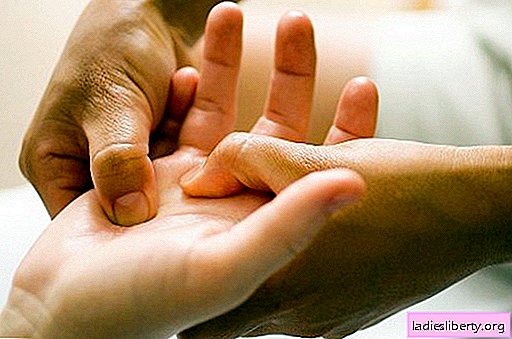
Hair loss, as well as their growth, is a natural phenomenon of hair changes that occurs throughout life around the clock.
There are approximately 100 thousand hairs on the head.
For a day, a person falls from 40 to 100 hair.
In spring and autumn, and in women during pregnancy, the losses are much greater.
If 15% of hair is lost during the day, and the remaining 85% are in the process of growth - this is the norm.
It is invisible to humans and does not cause anxiety. But under the influence of certain factors, a significant imbalance occurs.
Hair loss mechanism
The hair follicle goes through continuously defined cycles in its development:
• growth;
• completion of growth;
• peace;
• new cycle
All phases of the hair follicle last 2 to 5 years, repeating in this order throughout life.
In the case of a "stop" of the follicle in the resting phase, the hair falls out without replacement with a new one. Thus, there is an active uniform hair loss and thinning. If treatment is not started on time, baldness will develop.
With simultaneous "shutting down" of the hair follicles from the process, alopecia areata develops in a limited area.
Causes of Hair Loss in Women
Currently, about 50 causes of hair loss in women have been established. The main ones are genetic predisposition and causes that are not related to heredity. They can be divided into external and internal.
Internal causes include:
• acute and chronic diseases (diabetes mellitus, pathology of the thyroid gland, digestive organs, infections of various etiologies, anemia, etc.);
• hormonal imbalance (including menopause, pregnancy, childbirth):
• hypovitaminosis.
External causes are numerous and varied:
• stress
• errors in nutrition;
• the effect of high and low temperatures;
• radiation and chemotherapy, various medications;
• chemical exposure;
• insufficient care;
• low-quality tools and preparations for hair;
• hairstyles that tighten hair tightly.
Androgenetic prolapse
Androgenetic hair loss develops under the influence of male sex hormones, which are present in women in small quantities.
Hair thinning occurs along the parting. An urgent consultation with a doctor is necessary to prescribe an analysis for sex hormones, clarify the diagnosis and further treatment tactics.
Diffuse alopecia
Diffuse alopecia - uniform loss of hair in large quantities: the hair remains on the pillow after sleep, in the bathroom when combing. This leads to:
• serious hormonal imbalance;
• diseases (seborrhea, dermatitis, etc.);
• surgical interventions;
• consequences of taking medications (antibiotics, antidepressants, antipsychotics, antitumor, chemotherapy);
• poor nutrition (vegetarianism, diet);
• stresses, etc.
In the event of diffuse alopecia, a consultation of a trichologist is needed before irreversible consequences occur.
Alopecia areata
Focal (nest) alopecia occurs in perfectly healthy women (it can affect people of all ages, of both sexes throughout the world). Suddenly, foci of baldness, covered with fluff. Total baldness does not cause.
It is believed that focal alopecia increases the risk of bronchial asthma, eczema, Hashimoto's goiter, vitiligo, and systemic diseases.
To cope with this pathology is possible with timely contact to the trichologist and careful and patient implementation of all recommendations. When these conditions are met, the hair will recover.
Traction alopecia
Traction alopecia develops due to the same type of tight hairstyles with curled hair: hair follicles are injured. Therefore, pigtails, tight "ponytails" must be periodically canceled to restore hair.
Telogen Alopecia
Telogen alopecia is observed in acute and chronic form.
The acute form develops after stress caused by:
• childbirth;
• serious volumetric operations;
• serious illness.
Chronic telogen alopecia is the scourge of healthy young women with thick hair. Hair is thinning in the frontotemporal region along the growth line, falling out in shreds when combing, washing and simply when sipping with a hand. 100 to 200 hairs are lost per day. With rest, good nutrition and lack of stress, the loss stops.
Anagen Alopecia
Anagen alopecia - develops under the influence of strong and fast-acting factors. The follicles do not have time to go into the resting phase and almost “instant” hair loss begins. These factors include:
• chemotherapy;
• radiation therapy;
• acute poisoning.
After starting chemotherapy, 90% of the hair is lost. At the same time, hair follicles do not die. After the termination of the destructive factor, the hairline returns to normal after 3 to 9 months.
Hair loss in women - treatment
In the treatment of alopecia in women, several groups of proven effective drugs are used that mainly affect the restoration of hair follicles. This is a time-tested practice.
Minoxidil is an effective remedy
FDA-approved 5% minoxidil (Rogain) is used to treat hair loss in women. It is a vasodilator. When used locally, it slows or stops alopecia and stimulates new hair growth in 81% of women, especially with timely treatment. It is prescribed twice a day, the effect appears after 4 months. The action of the drug is to extend the hair growth cycle: damaged follicles are strengthened and restored, the growth of new follicles begins.
Minoxidil is currently used to treat androgenetic alopecia, and not as an antihypertensive drug. It is applied twice a day.
Minoxidil stimulates hair follicles and hair growth, but does not remove the cause of alopecia. Therefore, after stopping the use of the drug over time, the process of baldness gradually progresses.
Antiandrogens
There are several drugs that belong to different pharmacological groups that are used in the treatment of various pathologies, but are effective in hair loss:
• Spironolactone (Aldactone) / potassium-sparing diuretic /;
• Cimetidine (Tagamet) / blocker of N 2 - histamine receptors /;
• Cipraterone acetate / androgen receptor antagonist /;
• Finasteride (Proscar, Propecil) / drug for the treatment of prostate adenoma and alopecia /.
There is some evidence of their positive effects on hair growth. These drugs are prescribed in combination with contraceptives if the woman is of reproductive age. Effective in androgenetic alopecia.
Oral contraceptives
Oral contraceptives dramatically the amount of androgens produced by the ovaries. They are prescribed only by a doctor, most often it is Diana 35 and Diana 50. They have serious side effects:
• chest pain;
• headaches;
• decreased libido.
When hair loss in women, treatment includes drugs that include female sex hormones - estrogen, progesterone. They are especially effective during menopause.
Iron preparations
If the cause of hair loss in women was anemia with a hemoglobin level of less than 70 g / l, iron supplements are necessary until the blood counts are fully restored.
Transplantology
In case of hair loss in women, treatment may consist in transplanting hairy areas to the baldness sites. This is a very painstaking manipulation: a small strip of skin is cut out, divided into hundreds of transplants, each of which contains only a few hairs. In the baldness zone, channels for transplantation are formed. The result occurs after 4 - 9 months, when the hair begins to grow.
Hair loss in women - prevention
When women have hair loss, prevention includes pretty commonplace, but effective measures:
• rejection of bad habits;
• rest mode: a lot of sleep, stay in the fresh air;
• avoid overheating and hypothermia (hat - in winter, hat - in summer);
• proper hair care (rejection of metal combs, hair dryers, irons, tongs, tight hairstyles);
• avoid stress;
• regular head massage with fingers or using a wooden brush;
• proper and timely nutrition; rejection of strict diets, starvation, refuse to vegetarianism, the use of spicy, fatty foods;
• multivitamin intake in spring and autumn.
This is the smallest thing that can be done for the beauty and health of your hair.











